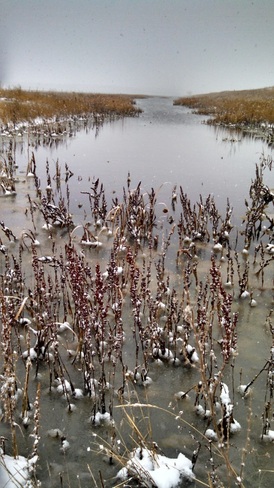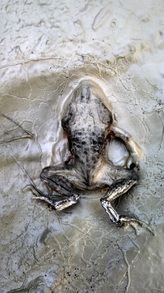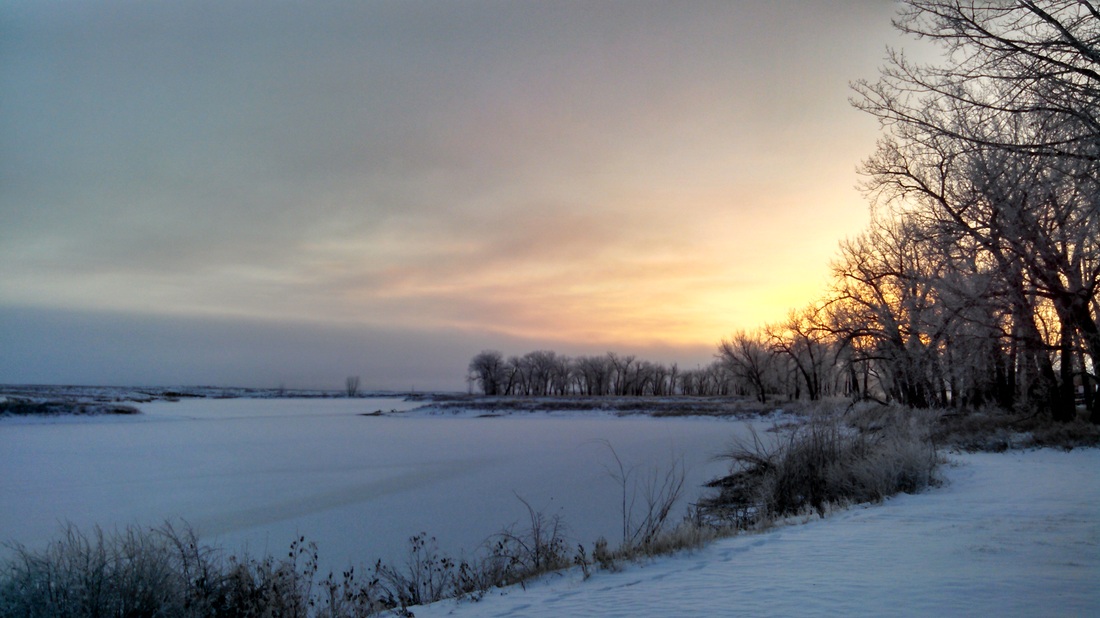The October and November Landmark crew didn’t witness the catastrophic floods of late summer. We never dealt with the endless rain and the gumbo roads. We didn’t visit the wreckage of the bridge across Fourchette Creek to the Buffalo Jump. We were never stranded for days in floodplains clear up to our doorstep, listening to the incessant whine of mosquitos.
Still, we have seen the flood. I can read the waterlines in the contour of flotsam piles and the washed-out green of algae in dry potholes. These signs spell out the story of every drop of water on this perennially parched land.
The fascinating thing about this story is that it is clearly visible, even in the dry months—of which there are many—and it is always being written.
The draws run to washes and coulees, the coulees into creeks, and the creeks into the Missouri River, which eventually makes its way to the ocean. They wear history into and out of the land, marking records of rainfall, drought and floods, washing away ancient petrified forests and the dusty remains of prehistoric creatures.
 A ditch near the Holzhey Ranch
A ditch near the Holzhey Ranch
When the old well at the Holzhey Ranch gave out in early November, we were left with quiet taps and an empty shower. I felt thankful that ASC buys us clean drinking water in Malta, and that APR rush-delivered a portable toilet on our front porch—even if it was 18 degrees below zero. We boiled water from the nearest stock pond to wash dishes until the snows came, leaving drifts of clean water right outside our door.
The cranes had moved on and the rattlesnakes had most certainly gone to bed, but we stayed until moving to the Lazy J Lodge a few days ago, where we can shower and wash our hands. It seems fitting to migrate here in search of water. The Lazy J sits in a depression in the land, a confluence of drainages with a reservoir in the middle. The frozen watercourse is a coyote highway, the outflow a welcome island of open water for ducks lagging on their migration.
In contrast, the house at the Holzhey Ranch sits atop a rise in the land, and as the water drains away from it, so do the creatures, including us. We venture out from the ranch in search of reservoirs and streambanks, migrating birds and thirsty coyotes. We venture out to read our own story in the watershed lines, as well as the story of the other organisms on the land, which is always continuing to be written.


